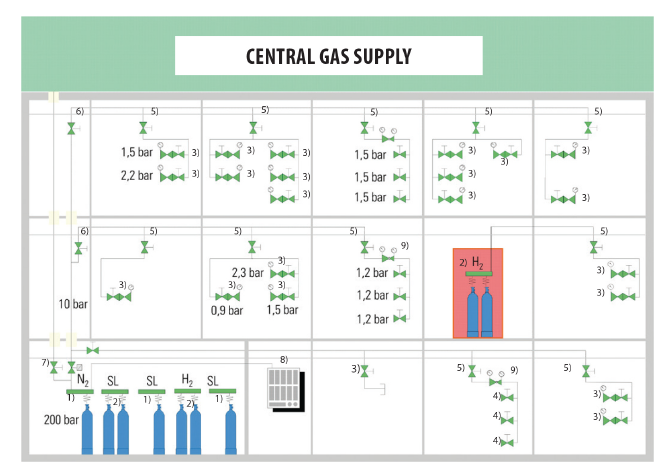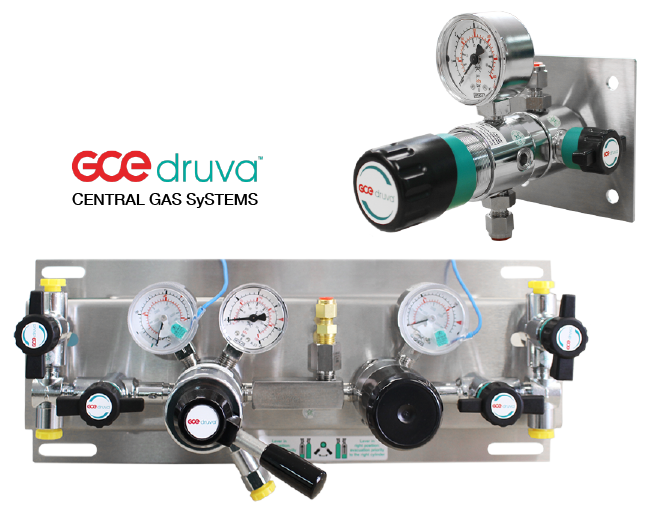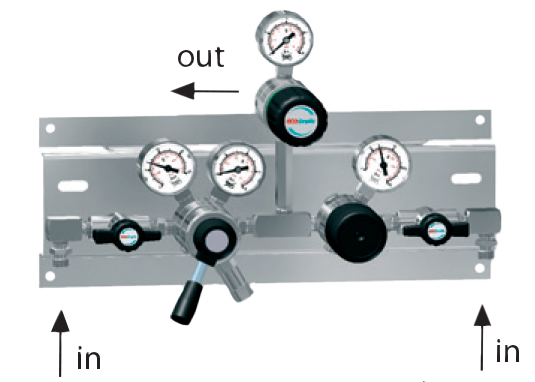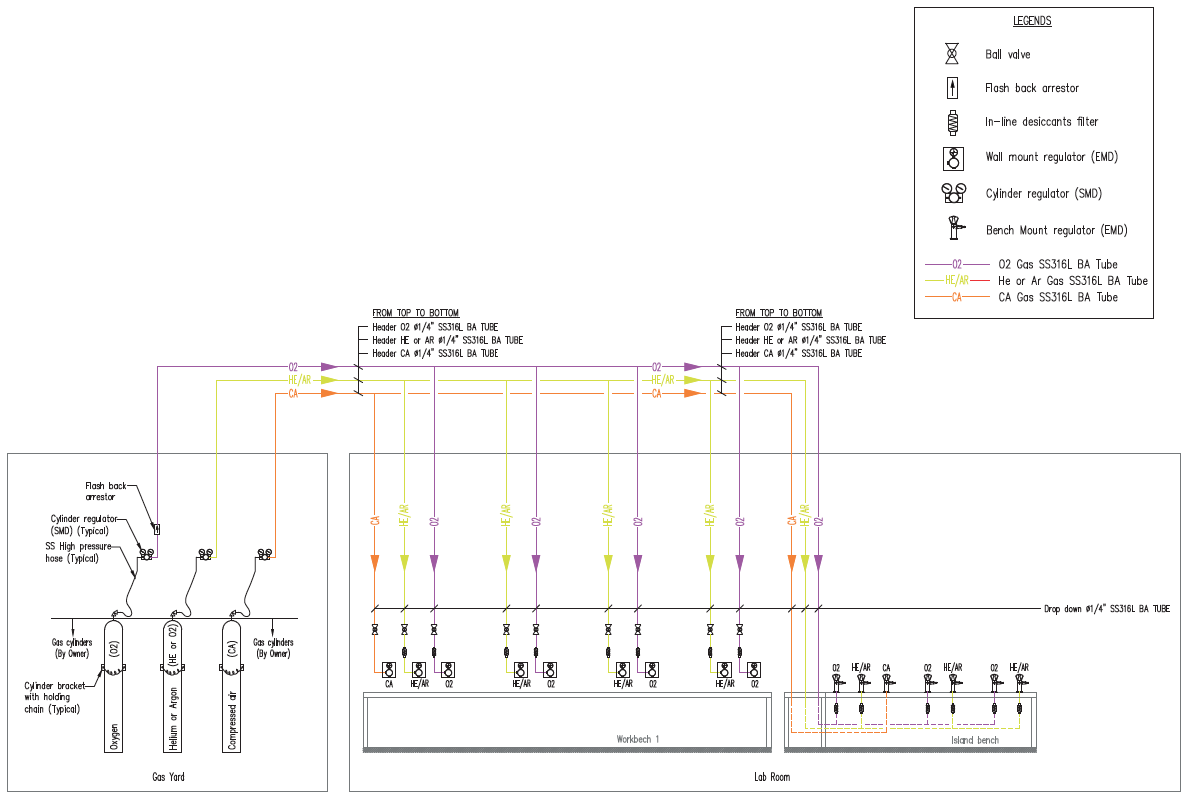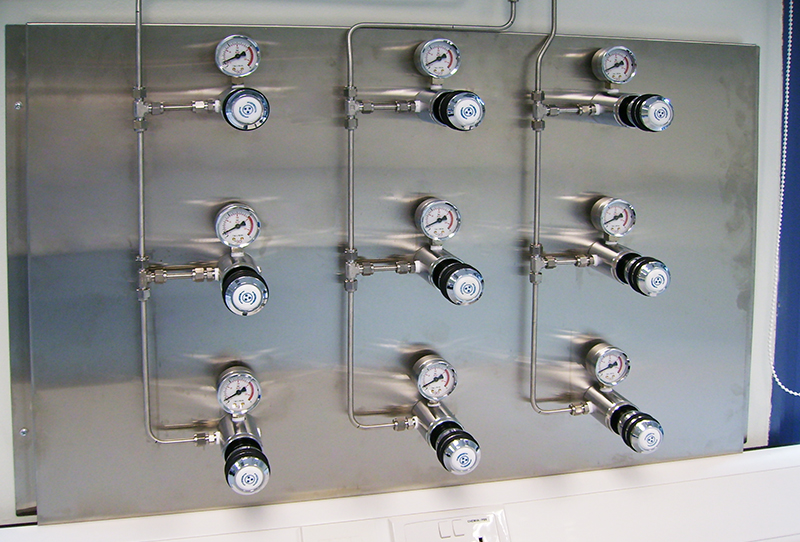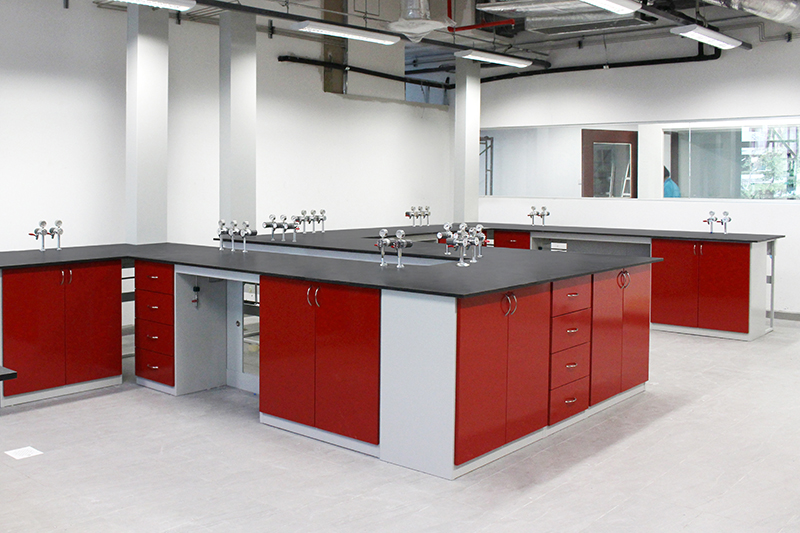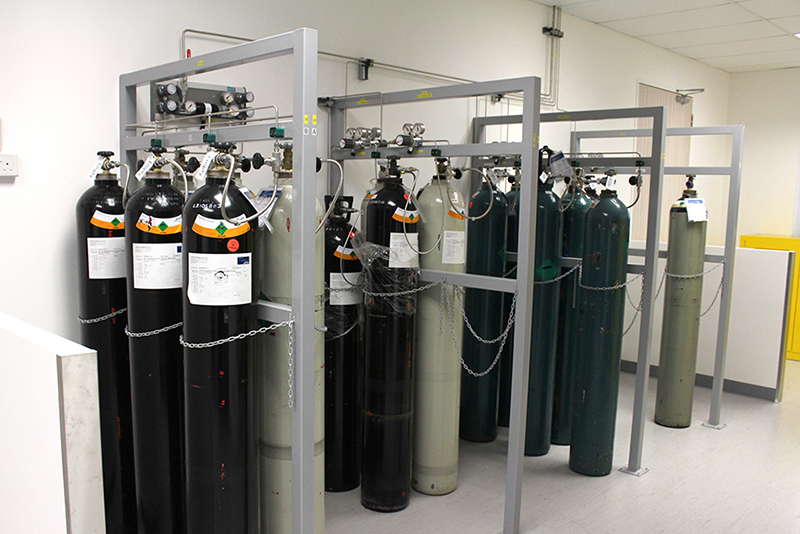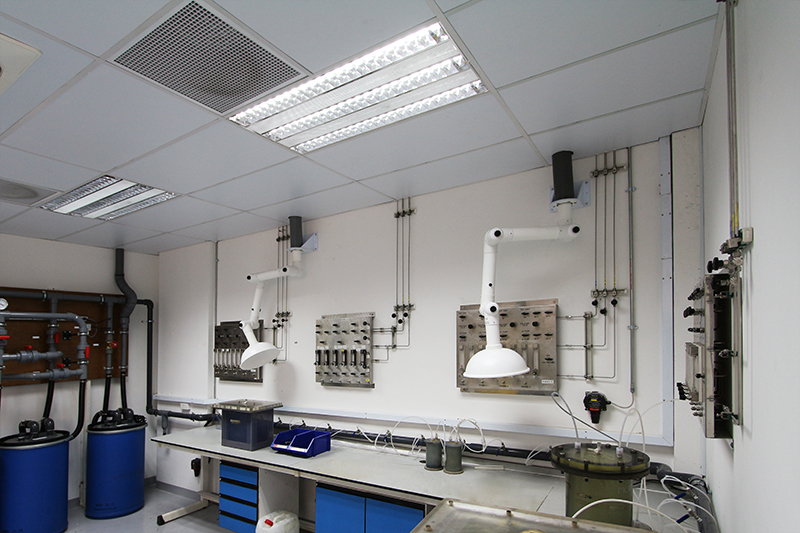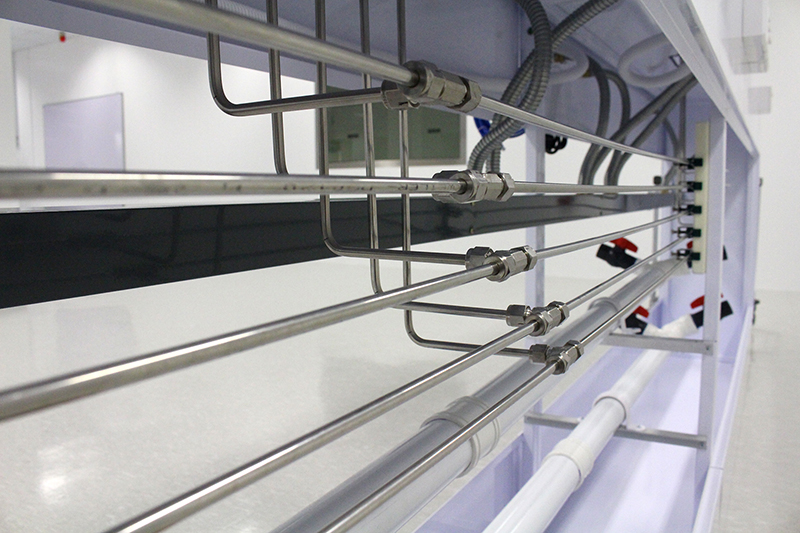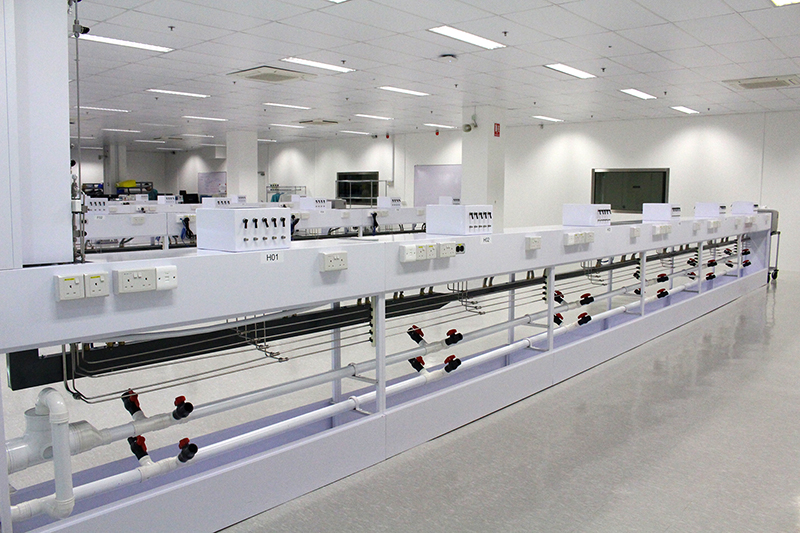Single-Stage Regulators
High pressure mediums enter through the inlet of the regulator to the high pressure chamber. When the hand wheel is turned clockwise, it compresses the spring and creates a force on the diaphragm, which pushes the regulator's poppet open. This releases the gas into the low pressure chamber, exerting an opposing force on the diaphragm which then closes the passage. Equilibrium is reached, when the spring force on the diaphragm is equal to the opposing force of the gas in the low pressure chamber.
In a single-stage regulator, delivery pressure increases as cylinder pressure falls, because there is less gas pressure exerted on the diaphragm. Thus, frequent adjustment of the control knob is required to maintain a constant delivery pressure. Therefore a two-stage regulator is recommended for applications requiring constant outlet pressure.
With the two stage regulator the point of use pressure stays practically constant, irrespectively of the cylinder pressure which sinks progressively as the cylinder empties
